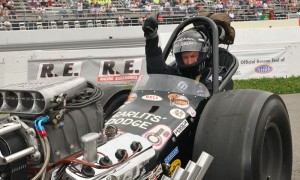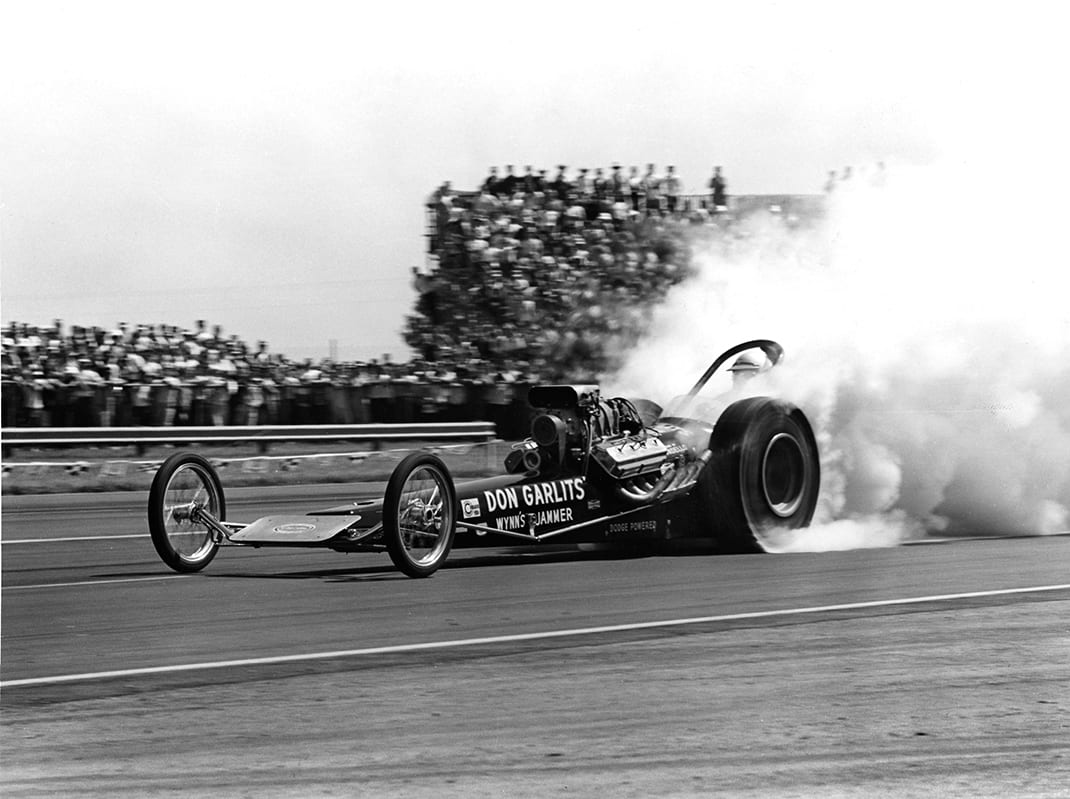During a life of close calls with the double demons of fire and flying shrapnel always lurking, Don Garlits has done some of his most profound thinking while lying in a hospital bed.
Maybe that’s the only circumstance during the past six or seven decades in which the flinty drag racer and mechanical maestro has slowed down long enough to ponder his path, contemplate challenges or decipher a dilemma.
Sheet time will do that, especially for the man who described two kinds of race car drivers: those who have crashed and those who will crash.
His first big introduction to physical pain in pursuit of a stunning E.T. slip came during a June 20, 1959, match race in Chester, S.C.
His supercharger exploded and flames blasted into the cockpit, where Garlits was strapped in with no protective gloves or face mask. His third-degree burns were so severe and his crispy fingers curled so tightly that blood poisoning was beginning to set in. Doctors at a local hospital advised amputating both hands. When Garlits said he would rather die, the doctor suggested he find another place to do it.
Garlits opted for Tampa General Hospital and rode a train back home. An emergency-room doctor there ordered him to surgery. When Garlits awoke, he discovered his hands submerged in a saline solution, where they remained for six weeks. He confessed that at that point he never wanted to drive a race car again.
His longtime schoolmate, Art Malone, a stock car racer, visited him in the hospital and Garlits asked if Malone could fulfill his 1959-’60 contracts. They struck a deal and Garlits immediately began to design a dragster that would be the first of more than 40 record-setters to spring from Garlits’ incisive mind and decisive hands.
His creations revolutionized drag racing and carried him to 144 national event victories — including eight U.S. Nationals crowns — and 17 championships. He earned 10 titles in the now-defunct American Hot Rod Ass’n, four in the International Hot Rod Ass’n and three in the National Hot Rod Ass’n.
Garlits, of course, jumped back into the seat in the spring of 1960. By then, he had acquired his famous nickname for his cars, thanks to an ad that fierce rival Serop “Setto” Postoian placed in Drag News, calling Garlits a “swamp rat.”

As a result, every unique version of his handmade dragsters was labeled “Swamp Rat” and numbered. On the West Coast, he was jeered as “Don Garbage.” He sloughed off criticism and continued to win races and set records. Eventually, he went on to top the NHRA’s list of its most influential drivers during the sanctioning body’s 50th anniversary celebration in 2001.
About a decade later — March 8, 1970 — Garlits again found himself in for a lengthy hospital stay, this time a continent away from home following his most famous accident at Lions Dragstrip in Long Beach, Calif.
As he scurried to get ready for the final round of AHRA’s Grand American Championship against Richard Tharp, he didn’t add enough oil to the transmission — his own “Garlitsdrive” two-speed tranny. That triggered a massive explosion that shot two pieces of steel through the quarter-inch-thick tranny housing, Garlits’ right foot and the frame of Swamp Rat XII.
The other hefty metal chunk spared his left foot as it flew from the other side of the car, sliced through timing equipment and struck the arm of a young fan in the stands.
Doctors saved the arm of spectator Tim Ditt, who the next season used his wholly functioning arm to work on Garlits’ crew. But Garlits’ foot was irreparable.
Garlits spent eight weeks in Pacific Coast Hospital.
“I laid out the plans for the rear-engine dragster, Swamp Rat XIV,” Garlits said later.”
That embodied what has become the standard today. Moreover, when he returned to his Florida home, in the town of Seffner at the time, Garlits sat in his wheelchair and built parts for the new dragster.
“I’m proudest of the rear-engine dragster,” Garlits said, rating his own achievements. He said he was pleased “getting the driver up in front of the engine, out of danger of all the flying parts from the drivetrain.”
Those are iconic Garlits inspirations and that’s just the tip of the 88-year-old icon’s iceberg. Reciting elapsed times, speeds, records, monumental matchups and stories from drag strips famous and obscure would be like trying to cram into a thimble the overflowing contents of a No. 2 washtub.
The same holds true for his scary incidents, retirements and comebacks.
In July 1986, the uninjured Garlits rode out a spectacular blowover at about 200 mph at New Jersey’s Old Bridge Township Raceway Park. The following year, at an ADRA race in Spokane, Wash., he experienced another blowover. This time he wound up with several broken ribs and crushed vertebrae. As a result, he took a five-year hiatus and became a TV analyst.
Click below to continue reading.
